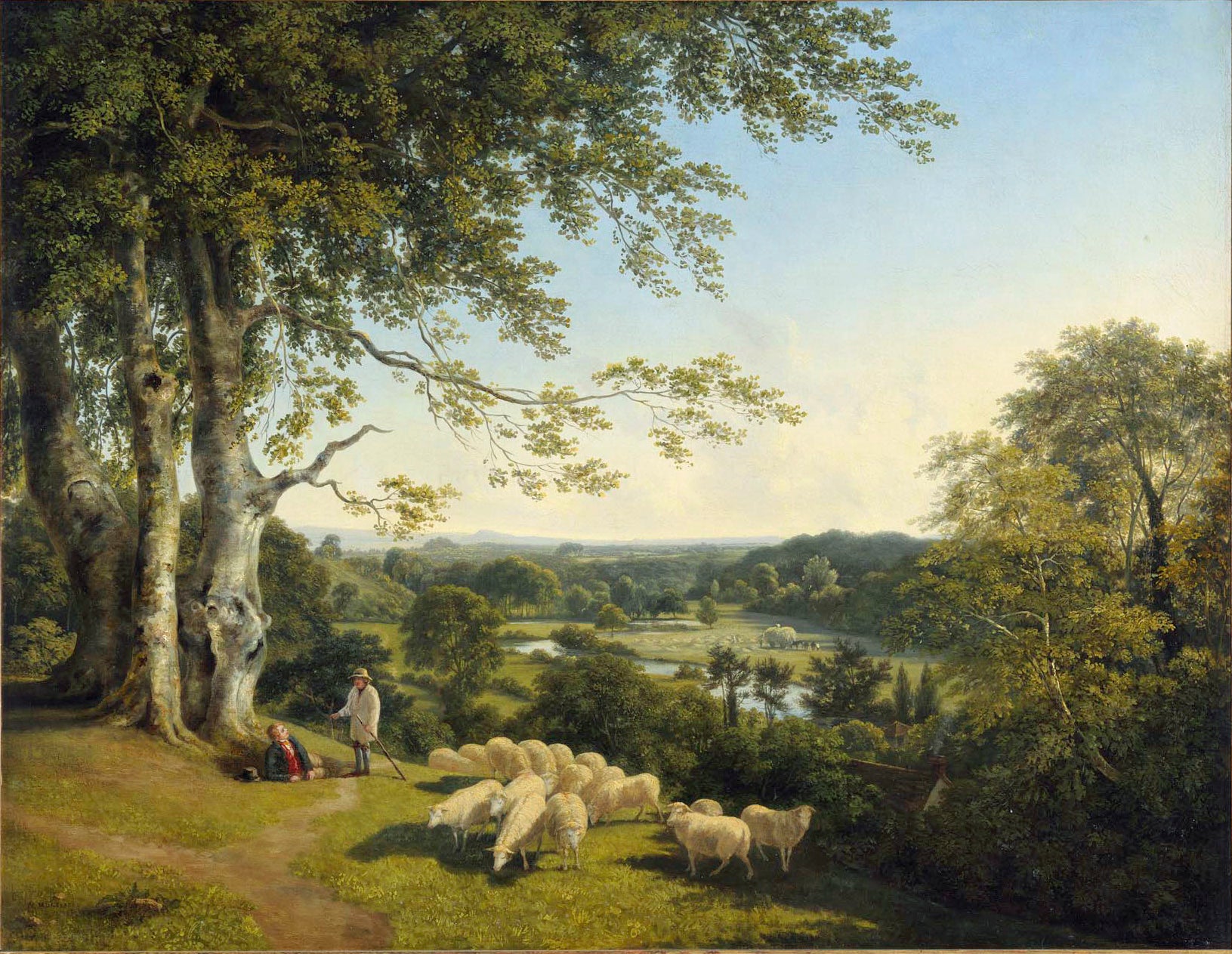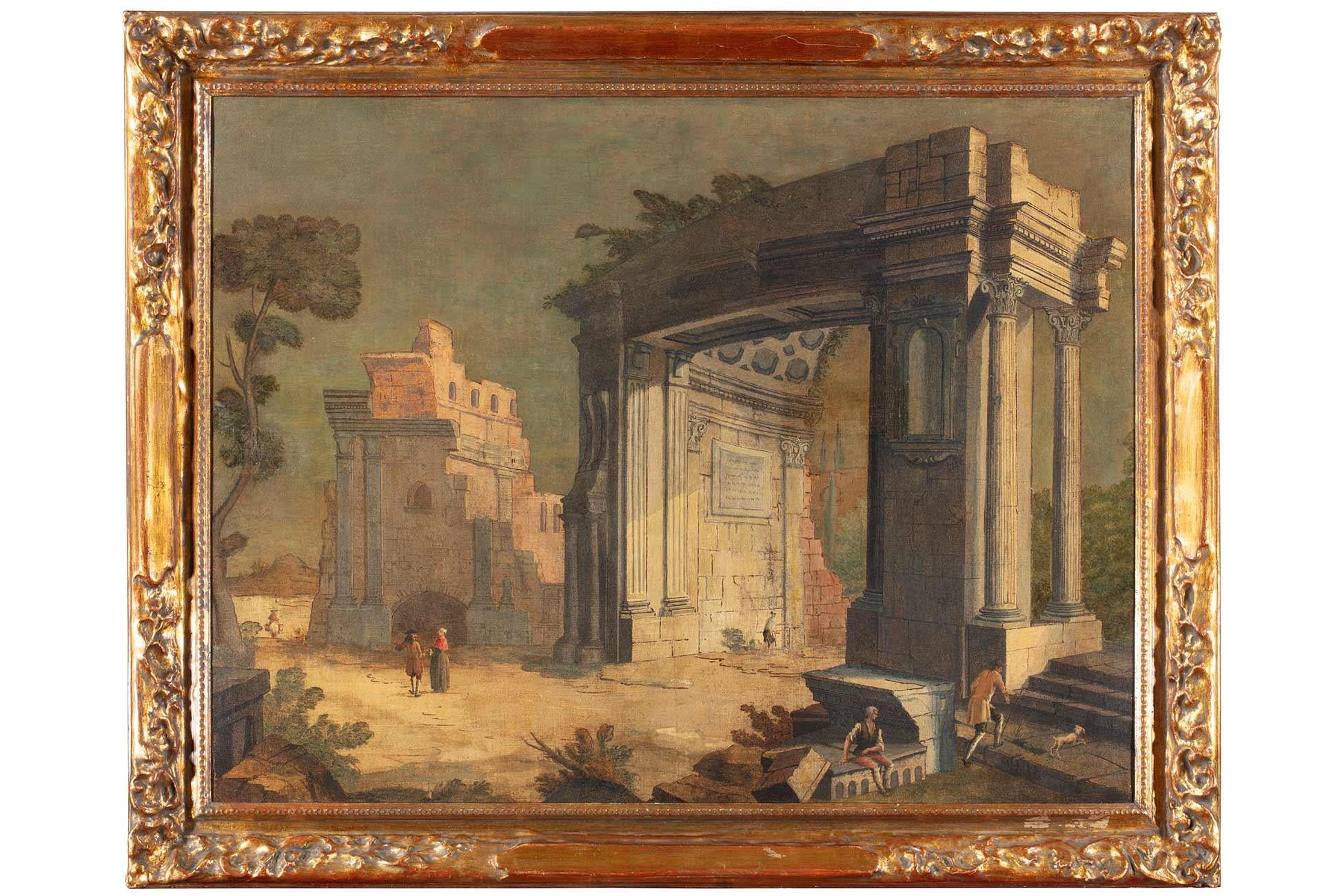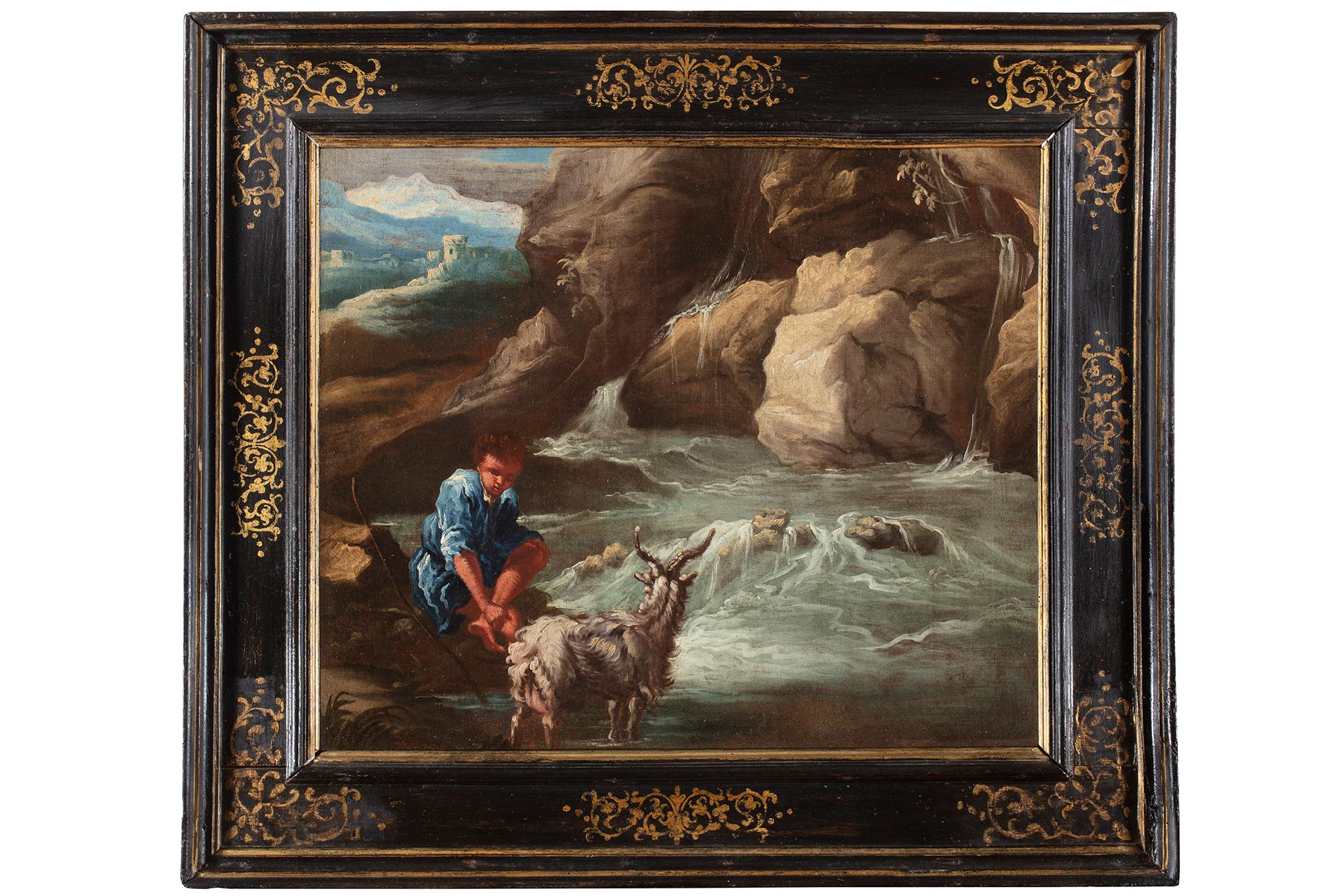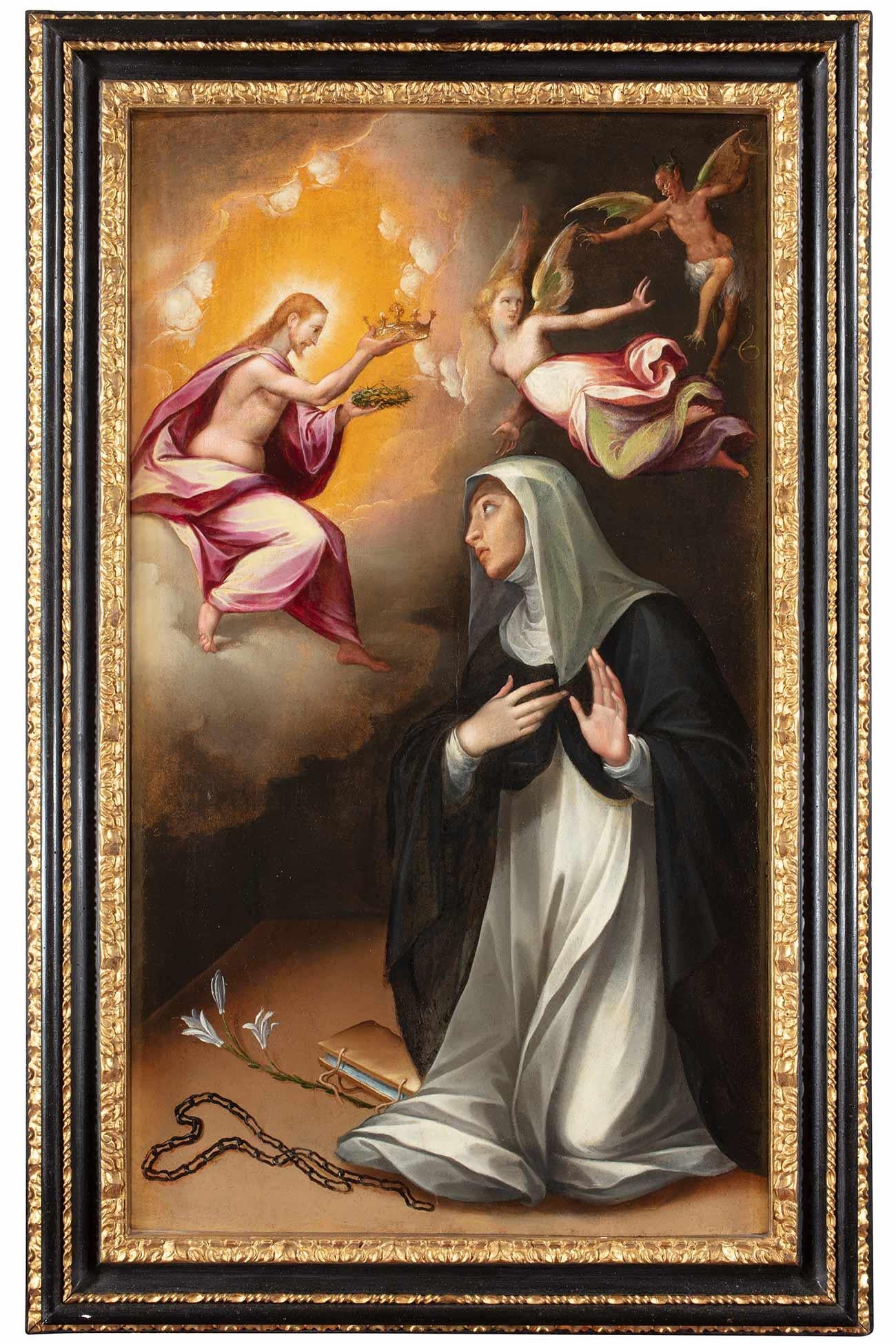Items Similar to A bay hunter in a landscape
Want more images or videos?
Request additional images or videos from the seller
1 of 10
Charles TowneA bay hunter in a landscape
About the Item
Charles Towne (1763-1840)
A bay hunter in a landscape
signed and dated 'Charles Towne Pinxit 1816' lower left
Oil on canvas
Painting Size - 20 x 26
Framed Size - 25 x 31 in
Provenance
The Collection of the late Countess Esterhazy
Charles Towne is the leading Liverpool landscape, animal and sporting painter of the first half of the nineteenth century. In his early work, his drawing is charmingly naive and provincial, and shows an awareness of the contemporary work of Thomas Stringer and, ultimately, George Stubbs, both of whom were from the same geographical area.
By the late 1790's he had developed more sophisticated draughtsmanly skills which are his subsequent hallmark throughout a long career. He was born in Wigan in 1763, but passed most of his working life in Liverpool; his frequent employment in rural Lancashire and Cheshire arose from a wide patronage among the local gentry. He visited London in the late 1790's, where he was noted in Farrington's "Diaries", and it seems likely that it was here that his techniques developed their more sophisticated aspects. His first painting was exhibited at the Royal Academy in 1799. In the next decade he appears to have been itinerant (his name is missing from the Liverpool Directories for these years), but by the end of the decade, he was sufficiently well-known in that City to be a founder, and the Vice-President of Liverpool Academy. He died in Liverpool on 6th January 1840, the possessor of a considerable local and national reputation
- Creator:Charles Towne (1753 - 1840)
- Dimensions:Height: 25 in (63.5 cm)Width: 31 in (78.74 cm)
- Medium:
- Movement & Style:
- Period:
- Condition:
- Gallery Location:Stoke, GB
- Reference Number:1stDibs: LU446313783252

About the Seller
5.0
Recognized Seller
These prestigious sellers are industry leaders and represent the highest echelon for item quality and design.
Platinum Seller
These expertly vetted sellers are 1stDibs' most experienced sellers and are rated highest by our customers.
Established in 2009
1stDibs seller since 2016
146 sales on 1stDibs
Typical response time: 3 hours
Associations
LAPADA - The Association of Arts & Antiques DealersInternational Confederation of Art and Antique Dealers' AssociationsThe British Antique Dealers' Association
- ShippingRetrieving quote...Ships From: Andover, United Kingdom
- Return PolicyA return for this item may be initiated within 2 days of delivery.
More From This SellerView All
- Gimcrack with jockey up, wearing the colours of 1st Earl GrosvenorLocated in Stoke, HampshireJohn Nost Sartorius (London 1759-1828) Gimcrack with jockey up, wearing the colours of Richard Grosvenor, 1st Earl Grosvenor Inscribed and signed 'Gi...Category
18th Century Old Masters Animal Paintings
MaterialsOil
- A dark bay racehorse held by his trainer at Newmarket HeathLocated in Stoke, HampshireBenjamin Killingbeck (act. 1769-1783) A dark bay racehorse held by his trainer on a racecourse Oil on canvas Canvas Size - 40 x 50 in Framed Size ...Category
18th Century Old Masters Animal Paintings
MaterialsOil
- Fisherfolk unloading the days catchBy John Thomas SerresLocated in Stoke, HampshireJohn Thomas Serres (1759-1825) Fisherfolk unloading the days catch Oil on canvas Canvas Size - 17 x 25 in Framed Size - 22 x 30 in John Thomas Serres, a luminary in the realm of mar...Category
18th Century Old Masters Landscape Paintings
MaterialsOil
- View of Shipping on the River Avon from Durdham Down, near BristolLocated in Stoke, HampshireThomas Smith of Derby (c. 1710-1767) View of Shipping on the River Avon from Durdham Down, near Bristol, 1756 Oil on canvas Canvas size - 20 x 47 in Framed size - 26 x 53 in Provena...Category
18th Century Old Masters Landscape Paintings
MaterialsOil
- A large wooded river landscape with droversBy Benjamin Barker of BathLocated in Stoke, HampshireBenjamin Barker of Bath (Pontypool 1776-1838) A wooded river landscape with drovers Signed and dated 'B.Barker pinxt/ 1807' lower right Oil on canvas 46 x 68 3/4 in (116.8 x 174.5 cm...Category
18th Century Old Masters Landscape Paintings
MaterialsOil
- A view at TivoliLocated in Stoke, HampshireJohn Rathbone (1750-1807) View at Tivoli Signed lower right Oil on Canvas Canvas size - 18 x 24 in Framed size - 24 x 30 in John Rathbone was born in Cheshire in 1750 and worked as ...Category
18th Century Old Masters Landscape Paintings
MaterialsOil
You May Also Like
- Early oil depicting the Great Fire of LondonLocated in London, GBThe Great Fire of London in September 1666 was one of the greatest disasters in the city’s history. The City, with its wooden houses crowded together in narrow streets, was a natural fire risk, and predictions that London would burn down became a shocking reality. The fire began in a bakery in Pudding Lane, an area near the Thames teeming with warehouses and shops full of flammable materials, such as timber, oil, coal, pitch and turpentine. Inevitably the fire spread rapidly from this area into the City. Our painting depicts the impact of the fire on those who were caught in it and creates a very dramatic impression of what the fire was like. Closer inspection reveals a scene of chaos and panic with people running out of the gates. It shows Cripplegate in the north of the City, with St Giles without Cripplegate to its left, in flames (on the site of the present day Barbican). The painting probably represents the fire on the night of Tuesday 4 September, when four-fifths of the City was burning at once, including St Paul's Cathedral. Old St Paul’s can be seen to the right of the canvas, the medieval church with its thick stone walls, was considered a place of safety, but the building was covered in wooden scaffolding as it was in the midst of being restored by the then little known architect, Christopher Wren and caught fire. Our painting seems to depict a specific moment on the Tuesday night when the lead on St Paul’s caught fire and, as the diarist John Evelyn described: ‘the stones of Paul’s flew like grenades, the melting lead running down the streets in a stream and the very pavements glowing with the firey redness, so as no horse, nor man, was able to tread on them.’ Although the loss of life was minimal, some accounts record only sixteen perished, the magnitude of the property loss was shocking – some four hundred and thirty acres, about eighty per cent of the City proper was destroyed, including over thirteen thousand houses, eighty-nine churches, and fifty-two Guild Halls. Thousands were homeless and financially ruined. The Great Fire, and the subsequent fire of 1676, which destroyed over six hundred houses south of the Thames, changed the appearance of London forever. The one constructive outcome of the Great Fire was that the plague, which had devastated the population of London since 1665, diminished greatly, due to the mass death of the plague-carrying rats in the blaze. The fire was widely reported in eyewitness accounts, newspapers, letters and diaries. Samuel Pepys recorded climbing the steeple of Barking Church from which he viewed the destroyed City: ‘the saddest sight of desolation that I ever saw.’ There was an official enquiry into the causes of the fire, petitions to the King and Lord Mayor to rebuild, new legislation and building Acts. Naturally, the fire became a dramatic and extremely popular subject for painters and engravers. A group of works relatively closely related to the present picture have been traditionally ascribed to Jan Griffier...Category
17th Century Old Masters Landscape Paintings
MaterialsOil, Canvas
- 18th Century By Vincenzo Re The Pool of Bethesda Oil on CanvasLocated in Milano, LombardiaExpertise by Prof. Giancarlo Sestieri. Vincenzo Re (Parma, 1695 – Napoli?, 1762) born in Parma, was an Italian scenic designer who during his career worked as initially an assistant...Category
18th Century Old Masters Landscape Paintings
MaterialsCanvas, Oil
- 17th Century by Simone Cantarini Adoration of The Magi Painting Oil on CanvasLocated in Milano, LombardiaSimone Cantarini (Pesaro 1612 - Verona 1648) Adoration of the Magi Oil on paper applied to canvas, cm. 16,5 x 24 – with frame cm. 22 x 29 Antique sh...Category
Early 17th Century Old Masters Figurative Paintings
MaterialsCanvas, Cotton Canvas, Oil
- 18th Century by Antonio Stom Architectural Capriccio Oil on Canvas_By Antonio StomLocated in Milano, LombardiaAntonio Stom (Venice c. 1688 - 1734) Architectural Capriccio oil on canvas, cm. 88 x 113 - with frame cm. 106 x 132 Carved, sculpted and gilded wooden frame Expertise: Giancarlo S...Category
Early 18th Century Old Masters Landscape Paintings
MaterialsCanvas, Cotton Canvas, Oil
- 18th Century by Giuseppe Pianca Shepherd with Goat and River Oil on CanvasLocated in Milano, LombardiaGiuseppe Antonio Pianca (Agnona di Borgosesia/VC, 1703 - after 1757) oil on canvas, cm. 49 x 57 - with frame cm. 67 x 77 Antique shaped wooden cassetta frame, ebony and gold decora...Category
18th Century Old Masters Landscape Paintings
MaterialsCanvas, Cotton Canvas, Oil
- 16th Century by Cristofano Roncalli Saint Catherine of Siena Oil on CanvasLocated in Milano, LombardiaCristofano Roncalli (Pomarance 1552 - Rome 1626) Saint Catherine of Siena chooses the crown of thorns oil on wood, cm. 101,5x59.5 - with frame cm. 120x76 Shaped, carved and sculpted wooden cassetta frame, partly gilded and partly ebonized wood Expertise: Marco Ciampolini The marvellous scene that opens before our eyes is that of Christ's apparition to Saint Catherine of Siena; she must choose between a golden crown, the symbol of earthly royalty, and a crown of thorns, the symbol of virtuous Christian sacrifice. Catherine does not hesitate to choose the crown of thorns, her life in imitation of...Category
16th Century Old Masters Landscape Paintings
MaterialsCanvas, Cotton Canvas, Oil





